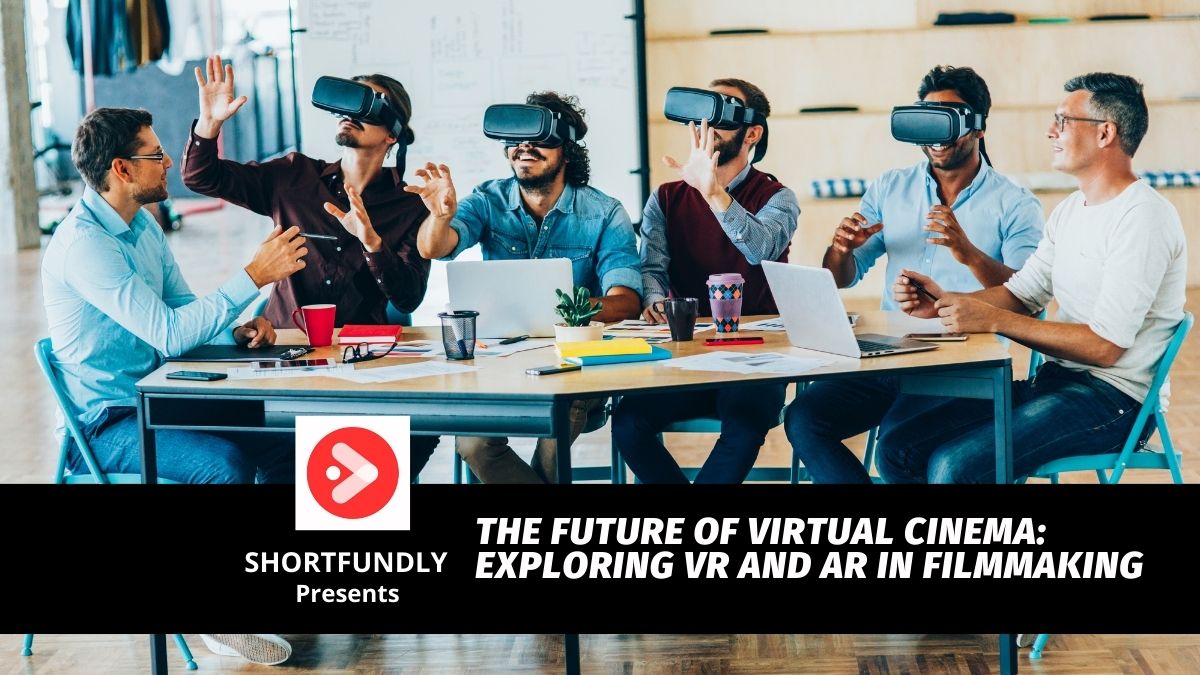Table of Contents

Introduction
The world of cinema is on the brink of a technological revolution, with virtual reality (VR) and augmented reality (AR) poised to reshape the way we experience and interact with films. These immersive technologies are taking storytelling to new heights, offering audiences a level of engagement that blurs the lines between fiction and reality.
The Future of Virtual Cinema: Exploring VR and AR in Filmmaking
Virtual Reality (VR) in Filmmaking
Virtual reality creates a fully immersive digital environment that transports viewers to a different world. In the context of filmmaking, VR allows audiences to step inside the story, becoming active participants rather than passive observers. With VR headsets, users can look around, explore the surroundings, and feel as if they’re truly part of the narrative.
Enhanced Immersion and Empathy
VR has the potential to deepen emotional connections between audiences and characters. Imagine being inside a character’s shoes during an intense scene, feeling their fear or excitement firsthand. This heightened level of empathy could revolutionize the way we experience storytelling, making it more intimate and impactful.
Interactive Storytelling
VR allows for interactive storytelling, where viewers make choices that influence the direction of the narrative. This “choose your own adventure” approach empowers audiences to shape the outcome of the story, creating a personalized and dynamic viewing experience. The decisions viewers make can lead to multiple story paths and endings, adding layers of complexity to the narrative.
Documentaries and Real-World Experiences
VR isn’t limited to fictional narratives; it’s also changing the way documentaries are created and experienced. VR documentaries transport viewers to real-world locations, giving them a sense of being present in the environment. This immersive approach can generate greater understanding and empathy for the subject matter, whether it’s exploring a refugee camp or witnessing a natural disaster.
Get OTT Certificate for short films as a way of boosting viewership. Click here to know more.
Augmented Reality (AR) and Film Integration
Augmented reality overlays digital content onto the real world. While VR creates entirely virtual environments, AR enhances the real world by adding digital elements. In filmmaking, AR can be used to enhance on-set experiences for actors and directors. For instance, AR can provide real-time visualizations of complex visual effects, allowing actors to interact with virtual creatures or environments that will be added later in post-production.
Blurring Fiction and Reality
AR also has the potential to create unique viewing experiences for audiences. Imagine watching a film while AR elements seamlessly integrate with the physical world around you. Characters could appear to walk among us, objects from the film could materialize in our living rooms, and environments could change based on our surroundings.
Challenges and Opportunities
While the future of virtual cinema holds immense promise, it also comes with challenges. VR and AR technologies are still evolving, and the creation of high-quality content requires specialized expertise. Filmmakers must navigate technical constraints and design narratives that effectively utilize the immersive potential of these technologies.
Expanding the Creative Palette
Virtual cinema opens up a world of creative possibilities for filmmakers. The traditional boundaries of framing and camera angles are redefined, allowing for new perspectives and immersive visual storytelling techniques. Directors can guide viewers’ attention by manipulating their gaze within the VR environment, creating a more dynamic and engaging narrative.
Community and Shared Experiences
Virtual cinema isn’t just about solitary experiences. Social VR platforms allow users to interact with friends and strangers, sharing the immersive journey together. This paves the way for new forms of collective storytelling and shared experiences that bridge the gap between physical and digital interactions.
Conclusion
The future of virtual cinema is a landscape of innovation and imagination. VR and AR technologies are pushing the boundaries of storytelling, enabling filmmakers to create immersive, interactive, and deeply emotional experiences. As these technologies continue to evolve and become more accessible, they hold the potential to revolutionize the way we engage with films, bridging the gap between the fictional and the real in ways we could have never imagined.
Note:
*Shortfundly is hiring for multiple roles in Chennai. Start referring your known connections to these openings*. Check it out – https://lnkd.in/erZm6rzh
About Shortfundly
Shortfundly is an OTT marketplace platform available to share the best short films and web series through global multi-platform network. Their editorial platform enables global audience to easily discover, watch, and share unique contents anywhere on their desktop, connected TV and mobile devices.
If you are planning to release and earn on an OTT platform, learn how to distribute your short film via Shortfundly.
For publishing an advertorial article about your digital news/product launch/ short film/web series/album song on our website, drop an email at [email protected]
Hey Cinephiles! We welcome guest blogging on our platform. Do share your article with us.
Check out our Shortfundly YouTube channel for other interesting podcasts & interviews with filmmakers.
To watch unlimited premium short films & web series, Download the Shortfundly mobile application now available on Google Play Store and Apple App store.










